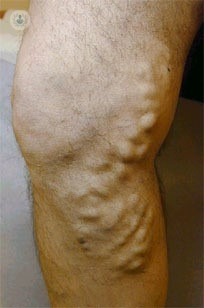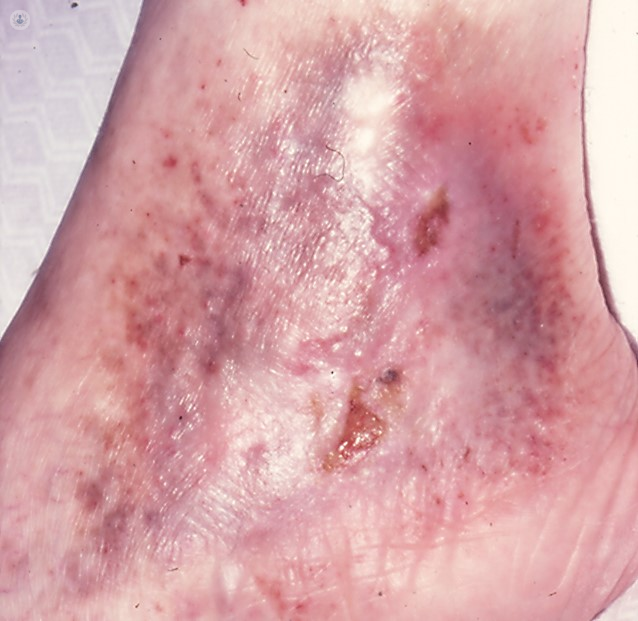FAQs: varicose veins and deep vein thrombosis
Written by:Varicose veins occur when superficial veins, which are located just under the skin, have become tortuous and dilated because the one-way valves in them are no longer working. Therefore, the blood is able to flow backwards and collect in the vein creating a downward pressurisation in the leg. Mr Harpaul Flora, a leading vascular surgeon, answers your frequently asked questions on both varicose veins and deep vein thrombosis.

As a result of the valve failure within the veins you could experience any of the following symptoms:
- Pain
- Limb swelling
- Leg heaviness and fatigue
- Night cramps
- Skin changes
- Ulcers
Varicose veins usually get worse over time but the rate at which this happens in individuals is unpredictable. Most people with varicose veins won’t get a leg ulcer, but if you have skin changes already you are at an increased risk of this. If you injure your leg at your ankle with a break in the skin, healing may well be delayed because of your veins.
Am I at higher risk of deep vein thrombosis (DVT)?
Having varicose veins does slightly increase the risk of DVT and there is also a slightly increased risk of DVT from long-haul flights.

What are the treatments available?
The objective is to either destroy or remove the vein that has the valve failure in order to depressurise the leg and improve the symptoms. The majority of treatments are minimally invasive and we favour the endovenous techniques, but a full assessment by a vascular surgeon will determine which treatment is best suited to your needs. The key treatments available include:
- Endovenous thermal ablation treatment (EVLT, EVRF Venefit)
- Surgery
- Foam sclerotherapy
How does the blood return from the leg if the vein has been destroyed?
The varicose veins aren’t helping as they allow blood to stay in your legs. There are plenty of other veins to get the blood out, and checking that these are working is part of the scan that we do before advising you on treatment.
What is my recovery after surgery?
Recovery is dependent on the treatment type you are having. You will generally have your legs bandaged after the procedure for 24-48 hours and then wear an elastic stocking for a further two weeks. You will also be given painkillers and anti-inflammatory medication for seven days. During this time it will be recommended that you stay active and mobile. Specific aspects of aftercare and recovery will be given by the vascular surgeon depending on the treatment that has been undertaken.
If you have varicose veins and are concerned about them, make an appointment with a specialist.


